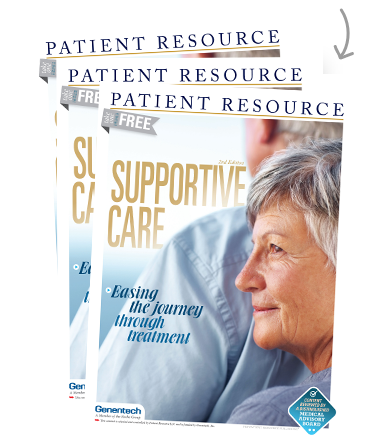Shortness of Breath (Dyspnea)
 Dyspnea is a condition in which you feel like you’re not getting enough air. Some patients describe it as a feeling of breathlessness or being short of breath. Approximately 20 to 90 percent of advanced cancer patients experience dyspnea at some point, and it can also occur in patients with earlier-stage cancers, especially if they have another condition involving the heart or lungs. Dyspnea can be a serious condition, so it’s important to talk to your doctor immediately if you experience any of the symptoms.
Dyspnea is a condition in which you feel like you’re not getting enough air. Some patients describe it as a feeling of breathlessness or being short of breath. Approximately 20 to 90 percent of advanced cancer patients experience dyspnea at some point, and it can also occur in patients with earlier-stage cancers, especially if they have another condition involving the heart or lungs. Dyspnea can be a serious condition, so it’s important to talk to your doctor immediately if you experience any of the symptoms.
What causes dyspnea?
Dyspnea can be caused by cancer, cancer treatments and other conditions unrelated to cancer. Some of the most common cancer-related causes of dyspnea include the following:
- Airway obstruction: The tumor is blocking the airways in the chest or lung(s).
- Blood vessel obstruction: Blood clots and/or tumor cells are blocking a blood vessel in the lung(s).
- Pleural effusion: The tumor is causing excess fluid to accumulate around the lungs.
- Carcinomatous lymphangitis: The tumor has spread through the lymphatics of the lung(s).
- Diaphragmatic paralysis: The tumor has spread and blocked a nerve, causing paralysis of all or part of the diaphragm.
Some of the most common causes of dyspnea related to cancer treatment include the following:
- Radiation pneumonitis: Lung damage has been caused by radiation therapy.
- Weakened heart muscle: The heart has become weak due to chemotherapy.
- Chest infection: Cancer treatments can cause an increased risk for chest infections, such as pneumonia.
Finally, some of the most common causes of dyspnea unrelated to cancer include the following:
- Bronchospasm: Contractions of the airway muscles cause spasms.
- Congestive heart failure: The heart can’t pump enough blood to meet the body’s needs.
- Chronic obstructive pulmonary disease: These diseases include chronic emphysema and bronchitis.
- Weakened diaphragm: The strength of the diaphragm has decreased.
- Anemia: The red blood cell count is low.
- Hypoxemia: There is a shortage of oxygen in the blood.
- Stress and anxiety: Dyspnea is one way the body physically manifests these emotions.
What are the symptoms of dyspnea?
Some of the common symptoms of dyspnea include:
- Breathing discomfort
- Inability to take in enough air
- Being short of breath
- Feeling like you’re suffocating, drowning or being smothered
How is dyspnea diagnosed?
Your doctor will likely perform a physical exam and a functional assessment, as well as one or more of the following tests to detect and diagnose dyspnea:
- Chest X-ray: a picture of the inside of your chest
- Computerized tomography (CT) scan: a three-dimensional picture of the inside of your body
- Complete blood count: a blood test to check the number of red and white blood cells, the number of platelets, the amount of hemoglobin in the red blood cells, and the percentage of the blood that’s made of red blood cells
- Oxygen saturation test: a procedure that tests how much oxygen the red blood cells are carrying
- Maximum inspiratory pressure (MIP) test: a test in which you breathe through a device to measure lung pressure
How is dyspnea treated?
Dyspnea treatment largely depends on the cause, but some of the most common treatment options include:
- Radiation therapy (to shrink tumors)
- Chemotherapy (to destroy tumors)
- Hormone therapy (to attack tumors)
- Cauterization (to burn tumors)
- Laser therapy (to remove tumors)
- Stent placement (to open an airway)
- Blood transfusions (in cases of anemia)
- Procedures to remove fluid surrounding the lungs (in cases of pleural effusion), the heart (in cases of pericardial effusion) or the abdominal cavity (in cases of ascites)
- Medications, such as antibiotics, steroids, bronchodilators, anticoagulants and diuretics
Options to treat the symptoms of dyspnea include:
- Oxygen therapy (receiving extra oxygen from a tank or other device)
- Opioid medications (to encourage relaxation and reduce anxiety)
- Breathing techniques (to help you take in more air)
- Opening windows or turning on fans (to increase air circulation)
- Relaxation training or meditation (to encourage relaxation and reduce anxiety)
Talk to your doctor about which treatment option(s) may be right for you.



